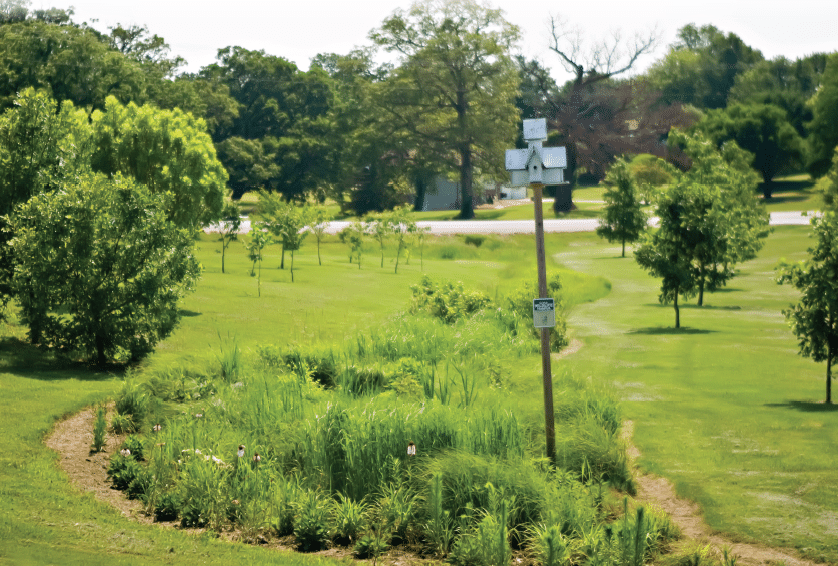Sustainable landscape practices encompass various aspects, one crucial element being effective stormwater management. If left unmanaged, stormwater runoff can lead to property flooding and the transport of contaminants that can harm nearby bodies of water. One method of stormwater management involves installing bioswales on a property.
Many landscape architects report that their clients become better environmental stewards after installing bioswales on their property. They begin to see green solutions in working native landscapes beyond traditional landscaping.
So, what exactly is a bioswale? A bioswale is a curved channel carved into the land to collect and convey stormwater runoff from roads, roofs, and parking lots. Bioswales are designed to mimic natural hydrology, aiming to filter pollutants from stormwater, recharge the groundwater table, and prevent erosion due to high-volume flow.
It’s important to note that bioswales and rain gardens are different. Bioswales function as conveyor systems, slowing and directing water flow while allowing some infiltration. In contrast, rain gardens are meant to increase infiltration without an outlet to convey runoff outside the garden’s borders.
Bioswales are best suited for areas near roofs, roads, parking lots, and driveways to catch and direct stormwater from hard surfaces. Slopes with gradual grade changes work best, but check dams created with earth sculpting. Rock can be added to slow water flow and prevent erosion on steeper slopes.
Unlike concrete drainage channels, native wildflowers and grasses in bioswales can add vibrant color to urban districts and are often more visually appealing.
Important points about bioswales
Contrary to common misconceptions, adequately designed and maintained bioswales can be aesthetically pleasing. Educating clients about seasonal changes and managing expectations can help address concerns about the appearance of bioswales.
Additionally, selecting the suitable plant material is essential for a pleasing aesthetic and the best stormwater control. Deep-rooted native perennials, including warm-season grasses and wildflowers, help channel excess stormwater deep into the soil. Proper maintenance is also necessary for the long-term function of bioswales. Annual cutting back or controlled burning will help keep the bioswale looking and performing its best.
Bioswales don’t attract mosquitos. Proper design of bioswales minimizes standing water, making them unsuitable for mosquito breeding. Additionally, they offer food and shelter to birds that feed on mosquitos and other insect pests.
Know before you go
For those interested in installing bioswales, it’s essential to understand the design and mechanics involved. Proper education on soil types, plant selection, and installation practices is crucial to avoid turning bioswales into unsightly swamps or barren areas.
Several certification programs are available for landscape professionals interested in learning about green infrastructure and sustainable stormwater solutions. These programs provide valuable knowledge on designing, installing, and maintaining sustainable landscapes.
The installation involves checking with local agencies managing storm sewers and waterways, as regulations vary. Additionally, it is crucial to ensure the soil infiltration rate is adequate and consider underdrains for areas with clay-like soil.
In summary, bioswales are a vital tool for sustainable stormwater management, and educating clients about their benefits and proper maintenance is critical to successful implementation.
Forrest Keeling Nursery is the largest native plant nursery in North America. Each year, the nursery offers nearly 400 native species and produces over 1.5 million plants using its patented RPM production technology. This technology allows the plants to develop and grow two times faster than traditionally produced plants.
Forrest Keeling Nursery… where the best native plants begin!

